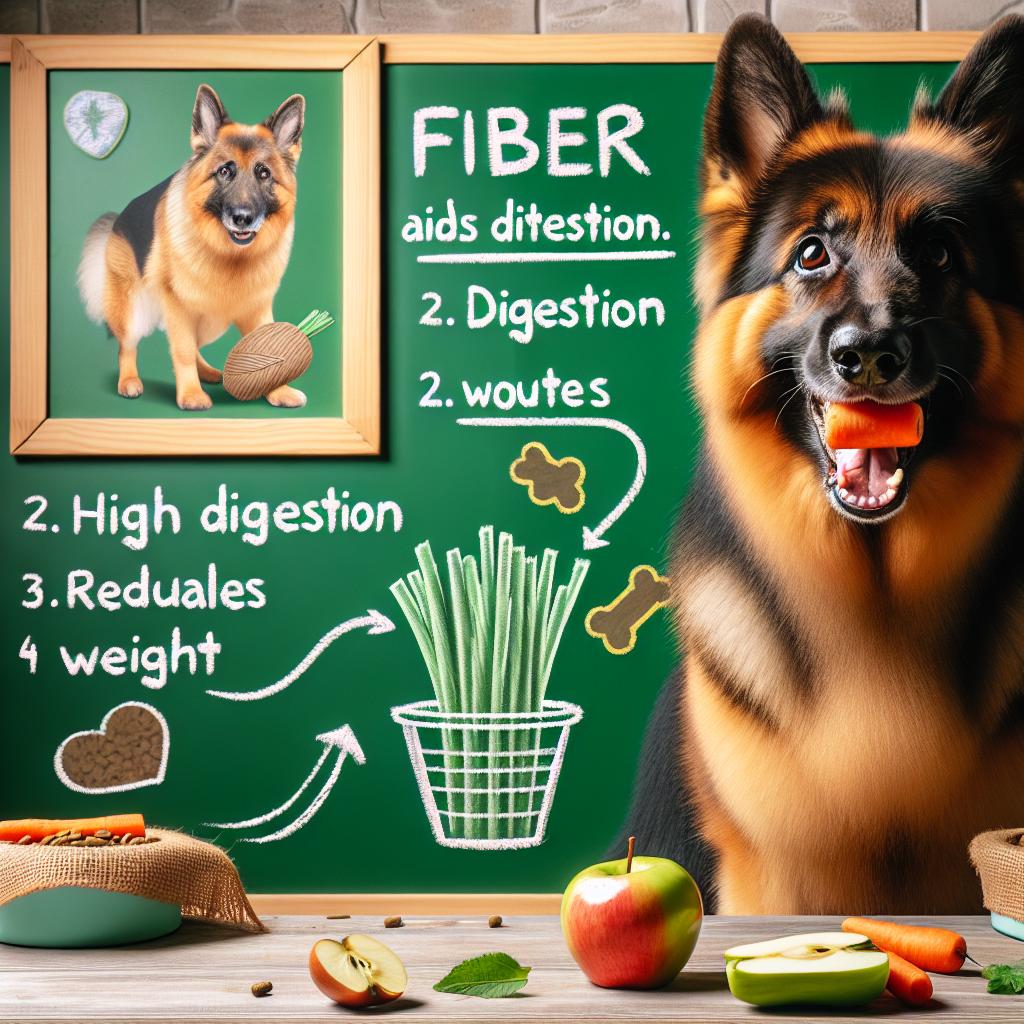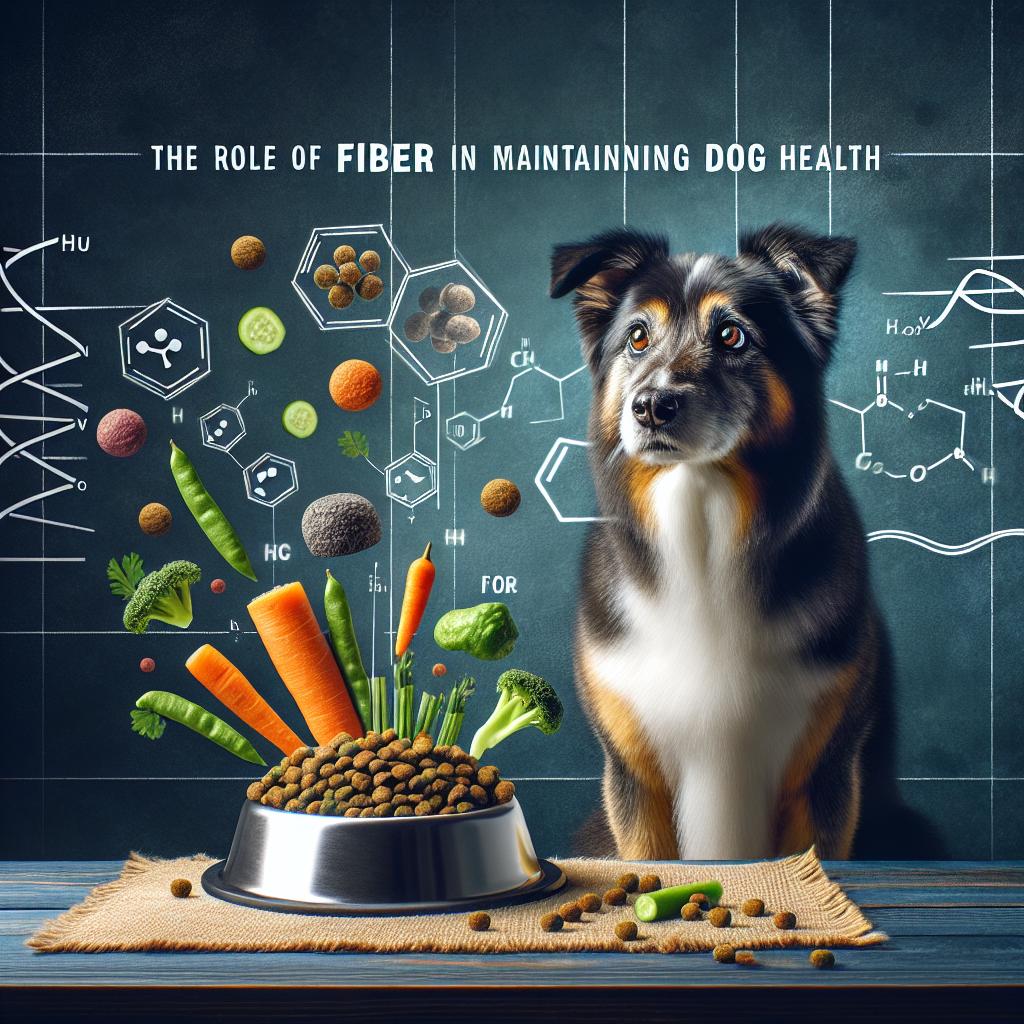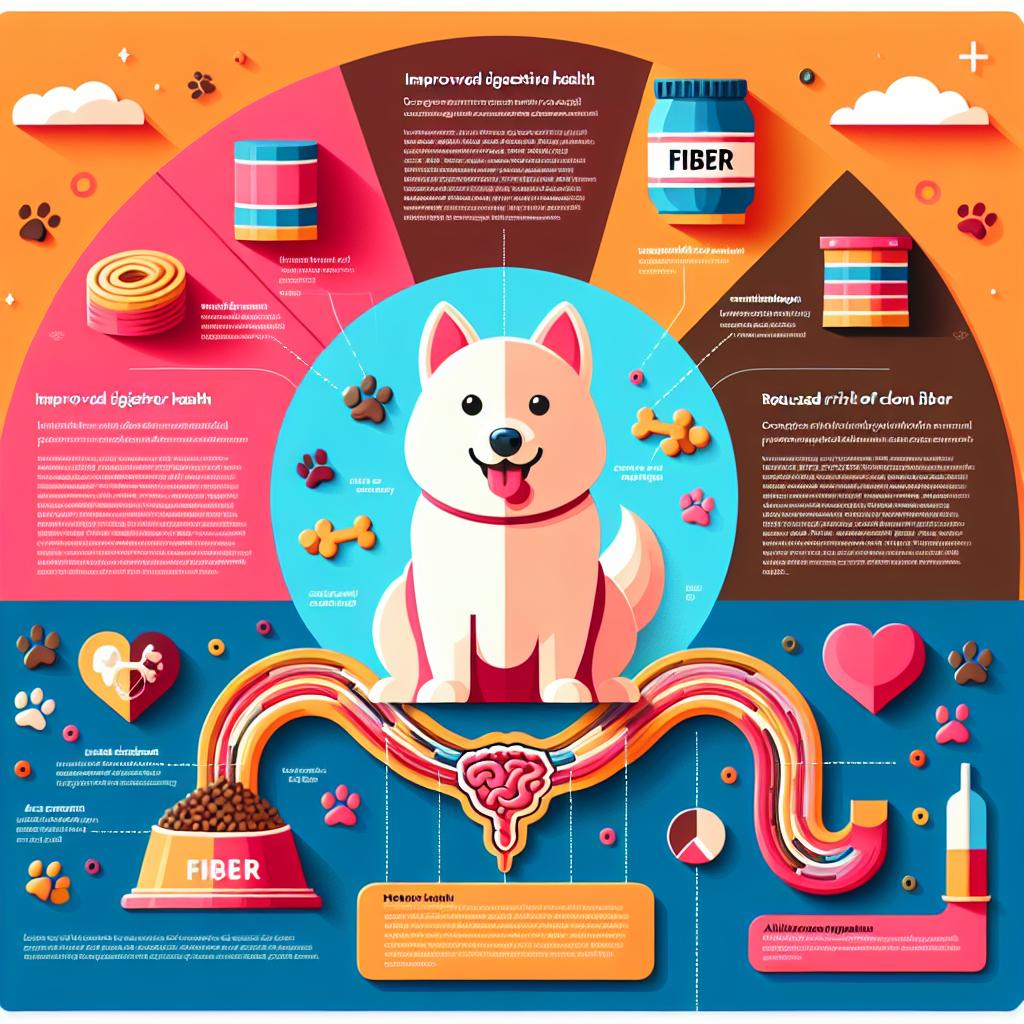In the realm of canine nutrition, one element often lurks in the shadows, overshadowed by proteins and fats—fiber. While it may not possess the flashiness of a gourmet treat or the allure of a protein-packed meal, fiber plays a pivotal, if understated, role in maintaining the overall health and well-being of our furry companions. Just as a well-tended garden flourishes with a balanced mix of soil nutrients, a dog’s body thrives on a diet that includes fiber. This article delves into the fascinating world of dietary fiber, exploring how it supports digestive health, regulates weight, and contributes to a dog’s vitality. Whether you’re a devoted pet parent or a curious canine enthusiast, join us as we uncover the myriad ways fiber can enrich your dog’s life, ensuring they lead a happy, healthy existence.
The Essential Functions of Fiber in Canine Digestion
Fiber plays a pivotal role in the digestive health of dogs, acting as a natural regulator for their gastrointestinal process. It helps in promoting regular bowel movements, which is crucial for preventing constipation and ensuring the smooth passage of food through the intestines. By adding bulk to the stool, fiber absorbs water and encourages the efficient elimination of waste. Additionally, fiber can support gut health by acting as a prebiotic, providing nourishment to beneficial gut bacteria. The balance of these bacteria is essential for optimal digestion and may even enhance the immune system.
Incorporating the right types and amounts of fiber into a canine diet can yield multiple health benefits. Below are key functions of fiber that contribute to a dog’s overall well-being:
- Weight Management: Fiber helps dogs feel full, reducing overeating.
- Blood Sugar Regulation: Soluble fiber can slow glucose absorption, aiding in diabetes management.
- Lowering Cholesterol: Fiber may help reduce cholesterol levels, supporting heart health.
- Digestive Health: Both soluble and insoluble fibers assist in maintaining a healthy digestive tract.

Choosing the Right Types of Fiber for Your Dog’s Diet
When selecting the appropriate types of fiber for your dog’s diet, it’s important to consider both soluble and insoluble fibers. Soluble fibers, like those found in oats and apples, dissolve in water and can help regulate blood sugar levels while providing a calming effect on the digestive system. Insoluble fibers, such as cellulose from vegetables, contribute to healthy bowel movements by adding bulk to the stool and helping prevent constipation. Incorporating a mix of both types can support overall gut health, making it critical to understand how each type benefits your dog.
Additionally, different fibers serve various specific needs, so it’s worth exploring options tailored to your dog’s unique health conditions. Below is a quick reference table highlighting some popular fiber sources and their benefits:
| Fiber Source | Type of Fiber | Primary Benefit |
|---|---|---|
| Oats | Soluble | Stabilizes blood sugar |
| Pumpkin | Soluble & Insoluble | Digestive aid and moisture retention |
| Green Beans | Insoluble | Low-calorie filler for weight management |
| Beet Pulp | Soluble & Insoluble | Promotes gut health |
Choosing the right fiber types involves observing how your dog responds to different fibers and adjusting accordingly. Consulting a veterinarian can help you determine the optimal fiber balance based on your dog’s age, breed, weight, and any existing health issues. With the right fiber sources, you can greatly enhance your dog’s digestive health and overall well-being.

Fiber’s Impact on Weight Management and Overall Wellness
Incorporating fiber into your dog’s diet is not just a matter of keeping their digestive system healthy; it also plays a crucial role in weight management. When fiber-rich foods are consumed, they tend to create a sense of fullness, discouraging overeating in our furry friends. This property of fiber can be particularly beneficial for dogs that are less active or have a tendency to gain weight. It’s a smart strategy to manage their calorie intake while ensuring they still feel satisfied after each meal. Consider the various sources of fiber that can help your canine companion maintain a healthy weight:
- Psyllium husk – a soluble fiber that aids in regulating bowel movements.
- Sweet potatoes – packed with fiber and nutrients, they serve as a great natural treat.
- Green beans – low in calories and high in fiber, making them a crunchy snack option.
Beyond weight control, fiber contributes to overall wellness by promoting regularity and preventing constipation. A healthy digestive system is essential for nutrient absorption, which directly affects your dog’s energy levels and vitality. Moreover, fiber can aid in managing certain health conditions like diabetes and can lower the risk of gastrointestinal disorders. To visualize the benefits of fiber, here’s a simple table outlining some fiber sources and their corresponding benefits:
| Fiber Source | Benefits |
|---|---|
| Oats | Rich in soluble fiber, helps control blood sugar levels. |
| Carrots | Low-calorie and high in fiber, great for snacking. |
| Brown rice | Supports digestion while providing energy. |

Signs Your Dog Needs More Fiber in Their Nutrition
Understanding the specific nutritional needs of your furry friend is paramount for their overall health. One of the essential components that often gets overlooked is fiber. If your dog’s diet lacks adequate fiber, you may notice a few troubling signs. Excessive gas, irregular bowel movements, or constipation can indicate an insufficient fiber intake. Furthermore, if you observe your dog frequently scrabbling at the door for bathroom breaks or showing signs of straining while pooping, it might be a cry for help from their digestive system.
Additionally, a change in your dog’s appetite could also be a telltale sign. Dogs that consume a fiber-poor diet may exhibit reluctance to finish their meals or seek more snacks between feedings. Pay attention to any weight fluctuations; dogs struggling with proper digestion often experience unexpected weight gain or loss. A comprehensive understanding of these indicators can help you make the necessary adjustments to their diet, ensuring your companion thrives. Here’s a quick reference guide:
| Signs | What to Watch For |
|---|---|
| Excessive Gas | Frequent passing of gas leading to discomfort |
| Irregular Bowel Movements | Infrequent or inconsistent stool |
| Appetite Changes | Lack of interest in food or frequent snacking |
| Weight Fluctuations | Noticeable weight gain or loss |
Q&A
Q: What is fiber, and why is it important for dogs?
A: Fiber is a type of carbohydrate that comes from plant-based foods. While dogs are primarily carnivorous, fiber plays a crucial role in their diet by aiding digestion, promoting gut health, and helping to maintain a healthy weight. It acts like a broom in the intestines, sweeping away waste while also supporting the growth of beneficial gut bacteria.
Q: How does fiber impact a dog’s digestive health?
A: Fiber improves digestive health by adding bulk to the stool and ensuring it moves smoothly through the gastrointestinal tract. This helps prevent constipation and can alleviate issues like diarrhea by absorbing excess water. Think of fiber as a gentle guide that helps keep your dog’s digestive system running efficiently.
Q: Are there different types of fiber that are beneficial for dogs?
A: Absolutely! There are two main types of fiber: soluble and insoluble. Soluble fiber dissolves in water and can help regulate blood sugar levels and lower cholesterol. It’s found in foods like oats and peas. Insoluble fiber, on the other hand, doesn’t dissolve and helps move food through the digestive tract. Sources include wheat bran and vegetables. A balance of both types is ideal for maintaining overall health.
Q: What are some good sources of fiber to include in a dog’s diet?
A: There are numerous tasty and healthy options to boost your dog’s fiber intake. Pumpkin puree, sweet potatoes, green beans, carrots, and brown rice are all excellent choices. You can also find fiber-rich dog foods on the market that incorporate these ingredients. Just be sure to introduce new sources gradually to allow your dog’s digestive system to adjust.
Q: How much fiber does a dog need, and can they have too much?
A: The optimal amount of fiber can vary based on factors like age, size, and health condition. Generally, dogs should have about 2-5% fiber in their diet. However, exceeding this amount can lead to gastrointestinal upset, such as gas or diarrhea. Always consult with your veterinarian before making significant changes to your dog’s diet to determine the right balance.
Q: Can high-fiber diets help with weight management in dogs?
A: Yes! High-fiber diets can be particularly beneficial for dogs that need to lose weight. Fiber adds bulk to the diet without adding a lot of calories, helping your dog feel full and satisfied. This can reduce begging and snacking between meals, making it easier to achieve and maintain a healthy weight.
Q: Are there any breeds that particularly benefit from higher fiber intake?
A: While all dogs can benefit from fiber, certain breeds predisposed to obesity or digestive issues may especially thrive on a fiber-rich diet. For instance, breeds like Cocker Spaniels or Dachshunds can be prone to weight gain, making fiber an excellent ally in their dietary plans. Additionally, older dogs often experience slower digestion, so fiber can be a great help in keeping everything running smoothly.
Q: What are some signs that a dog might not be getting enough fiber?
A: If a dog is not getting enough fiber, you might notice issues like irregular bowel movements, constipation, or diarrhea. It may also affect their overall demeanor; a dog struggling with digestive discomfort may appear lethargic or irritable. If you observe any of these signs, it may be time to reassess your dog’s diet and consider incorporating more fiber.
Q: Should I consult a veterinarian before changing my dog’s fiber intake?
A: Absolutely! A veterinarian can provide personalized dietary recommendations based on your dog’s specific health needs, age, and activity level. They can help you determine the right fiber sources and quantities, ensuring your furry friend stays happy and healthy. Making informed decisions together will set the stage for a beneficial fiber journey for your dog.
Wrapping Up
the role of fiber in maintaining your dog’s health cannot be overstated. As we’ve explored, this essential component of a balanced diet offers numerous benefits—from supporting digestive health to aiding in weight management and promoting overall vitality. Just as we prioritize fiber in our own diets, recognizing its importance for our furry companions is equally vital.
Incorporating fiber-rich foods into your dog’s meals is a simple yet effective way to enhance their well-being. Whether through natural sources like fruits and vegetables or specially formulated dog foods, the key is to ensure a balanced approach tailored to your dog’s unique needs. As you embark on this journey toward better health for your pet, remember that small changes can lead to significant benefits.
So, the next time you’re filling your dog’s bowl, take a moment to consider the power of fiber. A little attention to their nutritional needs today can set the stage for a healthier, happier tomorrow. After all, a well-fed dog is a happy dog, and with proper care, we can ensure our beloved pets lead long, active lives filled with joy and companionship.

